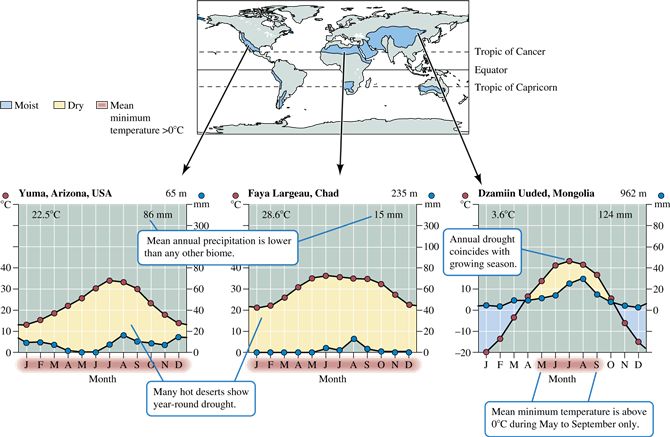 |
| Previous Image | Next Image |
| Description: Environmental conditions vary considerably from one desert to another. Some, such as the Atacama and central Sahara, receive very little rainfall and fit the stereotype of deserts as extremely dry places. Other deserts, such as some parts of the Sonoran Desert of North America, may receive nearly 300 mm of rainfall annually. Whatever their mean annual rainfall, however, water loss in deserts due to evaporation and transpiration by plants exceeds precipitation during most of the year. Figure 2.26 includes the climate diagrams of two hot deserts. Notice that drought conditions prevail during all months and that during some months average temperatures exceed 30°C at both Yuma, Arizona, and Faya Largeau, Chad. The maximum shade temperatures in any biome, greater than 56°C, were recorded in the deserts of North Africa and western North America. However, some deserts can be bitterly cold. For example, average winter temperatures at Dzamiin Uuded, Mongolia, in the Gobi Desert of central Asia sometimes fall to ?20°C. Notice that the average annual temperature at Dzamiin Uuded is only 3.6°C and the growing season, as indicated by the months shaded red on the climate diagram, lasts only five months. The relatively moist period at Dzamiin Uuded occurs during the cold season when average temperatures are below 0°C. It is a lack of available water, rather than extremely hot temperatures that makes a desert. Even large expanses of Antarctica are considered deserts.
Picture Stats: Views: 1360 Filesize: 59.2kB Height: 437 Width: 670 Source: https://biology-forums.com/index.php?action=gallery;sa=view;id=1565 |
